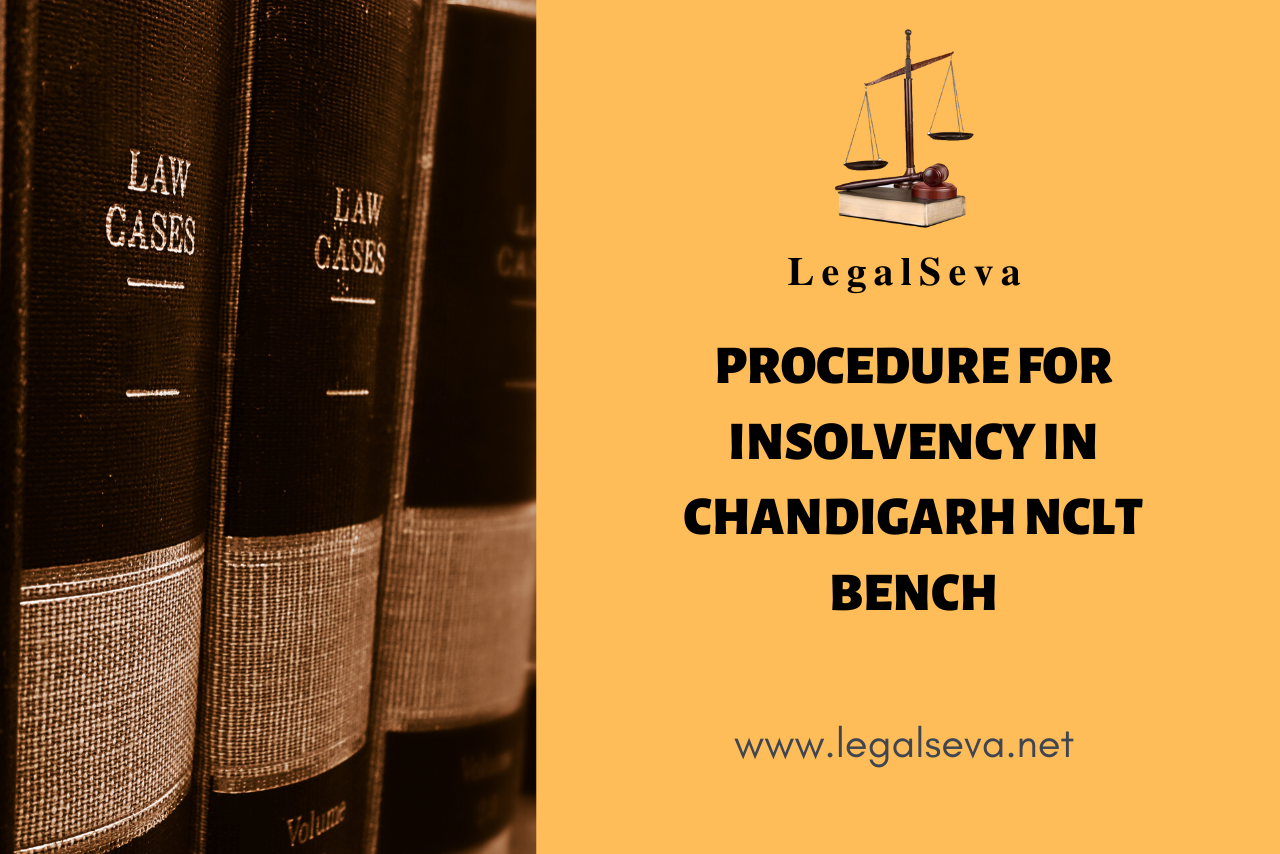Last Updated on April 18, 2020 by Legalseva.net
Insolvency is the state at which an individual or a corporate entity is unable to repay its debts or financial obligations from their assets. It usually arises from poor cash management, a reduction in cash inflow, or an increase in expenses. Bankruptcy on the other hand is adetermined insolvency made by a court of law with resulting legal orders intended to resolve the insolvency. The insolvency and bankruptcy code, 2016 provides for a time-bound process to resolve insolvency. When such default in repayment of debts occur, creditors gain control over debtor’s assets and must take steps to resolve insolvency within a 180-day period.The law of insolvency is a legislation made with a social objective, which has been enacted to provide relief to the honest debtors who due to unfortunate or unforeseen circumstances become incapable of paying back their debts. Its main objective is of securing distribution of a debtor’s estate among his creditors equitably and thereafter to release him under certain conditions from liability in respect of his debts and obligations.This law therefore does not dictate the content of the resolution outcome but designs the form of the process leading to the resolution.
Also Read- Corporate INSOLVENCY Resolution PROCESS Chandigarh Bench NCLT
The process of insolvencycan be initiatedby filing of an application before the National Company Law Tribunal (NCLT). The process can be initiated by two types of creditors that are, financial creditors and operational creditors as well as the debtor themselves. However, for the admission of such an application, the creditor will have to show that a requisite default is ascertainable.
Also Read- Nclt for Homebuyers
However, presently under the code only companies (both private and public limited company) and Limited Liability Partnerships (LLP) can be considered as defaulting corporate debtors. Although the code contains provisions with respect to individual insolvency, these provisions have not been notified i.e. they have consequently not come into force yet. Therefore, cases relating to unpaid debts against individuals and partnership firms are beyond the ambit of the code.
Also Read- Move to Nclt Chandigarh for Insolvency
Once the matter is admitted by the NCLT, the tribunal proceedswith the matter by appointingan Interim Resolution Professional (IRP) who takes over the management of the defaulting debtor. The Resolution Professional may then be continued or stopped, contingent on the wishes of the Committee of Creditors (COC). The role of the Resolution Professional primarily entails in making sure that the defaulting debtor be as far as possible in continuing to operate as a going concern. All efforts will be made to ensure that maximum realization of debts can take place as a resultant of the Corporate Insolvency Resolution Process (CIRP) process.
Also Read- Send Demand Notice Before Insolvency Case
Part II of the Insolvency and Bankruptcy Code, 2016 deals with the insolvency resolution and liquidation forcorporate persons. Section 4 of the Codeprovides that Part II of the Codeshall apply to matters relating to the insolvency and liquidation of corporate debtors where the minimum amountof the default is one lakh rupees.
Part II of the Insolvency and Bankruptcy Code, 2016 lays down the following two independent stages:
- Corporate Insolvency Resolution Process (Sections 4 and 6 to 32)
- Liquidation (Sections 33 to 54 and Section 59)
Also Read- Benefits of Insolvency Law for Corporate
In corporate insolvency resolution process, the financial creditors assess the viability of debtor’sbusiness and the options for its revival and rehabilitation. If the corporate insolvency resolution process failsor the financial creditors decide that the business of the debtor cannot be carried on in a profitable mannerand that it should be wound up, the debtor’s business undergoes the liquidation process. In the liquidation process, the assets of the debtor are realised and distributed by the liquidator inaccordance with the provisions of the Insolvency and Bankruptcy Code, 2016.
Section 6 of the Insolvency and Bankruptcy Code, 2016 provides for who can initiate the insolvency process, it says that that where any corporate debtor commits adefault, a financial creditor, an operational creditor or the corporate debtor itself may initiate corporateinsolvency resolution process in respect of such corporate debtor in the manner as provided under Chapter IIof Part II of the Code.
Also Read- Hombuyers and Insolvency
Section 7 of the Insolvency and Bankruptcy Code, 2016 lays down the procedure for the initiation of the corporate insolvency resolution process by a financial creditor. Section 7(1) of the Code provides that a financial creditor either by itself or jointly with other financial creditors, or any other person on behalf of the financial creditor, as may be notified by the Central Government may file an application for initiating corporate insolvency resolution process against a corporate debtor before the National Company Law Tribunal when a default has occurred.
Section 8 the Insolvency and Bankruptcy Code, 2016 lays down the procedure for the initiation of the corporate insolvency resolution process by an operational creditor. The procedure for insolvency resolution by operational creditor laid down in section 8 differs from the procedure applicable to financial creditors under section 7 of the Code. The rationale for a different procedure in case of operational creditor is based on the premise that the operational debts (such as trade debts, salary or wage claims) generally tend to be of smaller amounts (in comparison to financial debts) or are recurring in nature. The probability of disputed debts in relation to operational creditors is also higher compared to financial creditors such as banks and financial institutions.
The procedure established in section 8 of the Code ensures that operational creditors, whose debt claims are usually smaller, are not prematurely putting the corporate debtor into the insolvency resolution process or initiating the process for extraneous considerations. The procedure laid down in section 8 also facilitate for informal negotiations between such creditors and the corporate debtor. Such negotiations may result in a restructuring of the debt outside the formal proceedings.
Also Read- A Must Know About Insolvency and Bankruptcy Code, 2016
Section 9(1) of the Code provides that if the operational creditor does not receive either the payment of the debt or a notice of existence of dispute in relation to the debt claim from the corporate debtor within a period of 10 days from the date of receipt of the invoice or demand notice under section 8, he can file an application with the National Company Law Tribunal for initiating the insolvency resolution process in accordance with section 9 of the Code.
Section 10 of the Insolvency and Bankruptcy Code, 2016 provides for the initiation of corporate insolvency resolution process by the corporate debtor itself.
In case of a default by corporate debtor, a corporate applicant thereafter may file an application for initiating corporate insolvency resolution process with the Adjudicating Authority. The authorization of a corporate applicant to file the application for initiating corporate insolvency resolution process is based on the rationale that since they are the people likely to have the best information about the financial affairs of the corporate debtor and permitting such applicants to initiate the CIRP would ensure timely intervention that is crucial for any corporate insolvency resolution process to succeed.
Also Read- Debt Recovery Under Ibc: a Speedy Remedy for Creditors
The corporate applicant (corporate debtor) can only initiate CIRP upon the occurrence of a default and not on mere likelihood of inability to pay debts. Therefore, a corporate applicant cannot trigger the corporate insolvency resolution process prematurely to abuse the provisions of the Code. Further, as the Code envisages the displacement of the management of the corporate debtor during the insolvency resolution process, corporate applicants would be deterred from initiating the insolvency resolution process for extraneous considerations.
According to section 11, a corporate debtor which is undergoing a corporate insolvency resolution process (at the time of such application) or has completed a corporate insolvency resolution process in the preceding twelve months is not entitled to file an application for initiating the corporate insolvency resolution process.
Also Read- NCLT CHANDIGARH BENCH PROCEDURE PROCESS
Section 12(1) lays down that subject to sub-section (2), the CIRP shall be completed within a period of 180 days from the date of admission of the application to initiate such process.
Section 13 of the Code states the actions that the NCLT must usually take after an application for initiating CIRP has been admitted. After admitting the application under section 7 or section 9 or section 10, the NCLT shall, by an order: (a) declare a moratorium for the purposes referred to in section 14, (b) cause a public announcement of the initiation of corporate insolvency resolution process and call for the submission of claims under section 15, and (c) appoint an interim resolution professional according to the method laid down in section 16. According to Section 13(2), the public announcement referred to in Section 13(1)(b) shall be made immediately after the appointment of the interim resolution professional.
Also Read- Legal Representation or Legal Notice?
Section 14 provides for the effect of the moratorium declared under section 13 of the Code.
Section 21 and 24 of the Insolvency and Bankruptcy Code, 2016 make provisions relating to the committee of creditors (CoC). Section 21 states the constitution of CoC while section 24 prescribes the modalities for the meeting of the CoC.
Section 21(1) further provides that the Interim Resolution Professional shall after collation of all claims received against the corporate debtor and determination of the financial position of the corporate debtor, constitute a committee of creditors.
Also Read- Why Your Company Need Posh Policy
Section 21(2) provides that the committee of creditors shall comprise all financial creditors of the corporate debtor. First proviso to section 21(2) provides that a financial creditor or the authorized representative of the financial creditor, if it is a related party of the corporate debtor, shall not have any right of representation, participation or voting in a meeting of the committee of creditors. ‘Voting share’ according to section 5(28), means the share of the voting rights of a single financial creditor in the committee of creditors which is based on the proportion of the financial debt owed to such financial creditor in relation to the financial debt owed by the corporate debtor.
Section 21(4) provides that where any person is a financial creditor as well as an operational creditor, then such person shall be considered a financial creditor to the extent of the financial debt owed by the corporate debtor.
Also Read- NCLT CHANDIGARH BENCH: POWERS AND PROCEDURE
Section 28 of the Code lists out certain actions that may be taken by the resolution professional only with the prior approval of the committee of creditors by a vote of 66 per cent of the voting share. If the resolution professional takes any of the actions listed in section 28(1) without obtaining the consent of the committee of creditors, such action shall be void. The resolution professional may also be liable to be replaced.
Thus the code provides for a detailed procedure for the process of Insolvency, it leaves almost no scope for error and therefore has given a well detailed solution to aggrieved creditors and debtors and also provides for such regulations that leave no scope for mishap or exploitation of the insolvency process.
Also Read- HOMEBUYERS RIGHT BEFORE NCLT CHANDIGARH BENCH
References
- Insolvency and Bankruptcy code ,2016
- Companies Act 2013
- Institute of Company Secretaries of India, Insolvency- Law and Practice
Also Read- RESTORATION OF NAME STRUCK OFF COMPANY BY NCLT CHANDIGARH
For case specific advice, please contact best/top/expert NCLT Chandigarh Lawyers Advocate Legal Advisor for company related issues, recovery of salary and homebuyer’s right.
This post is written by Rachita Yedhula.
More on 99888-17966.


2 thoughts on “PROCEDURE FOR INSOLVENCY IN CHANDIGARH NCLT BENCH”
Comments are closed.